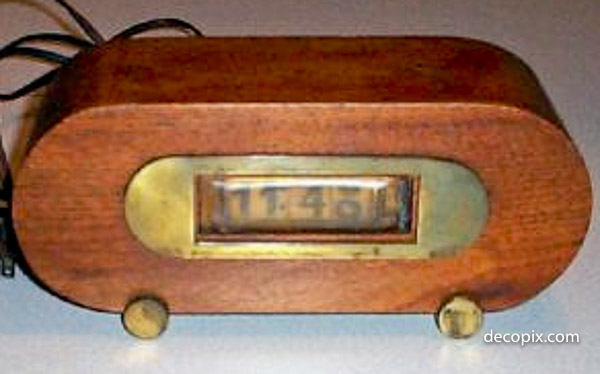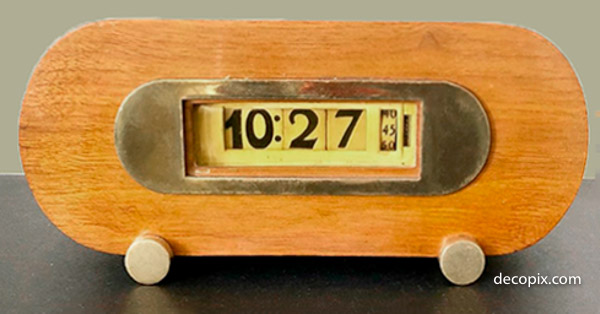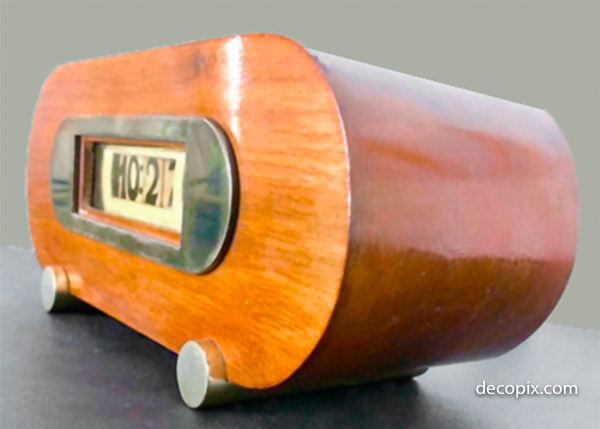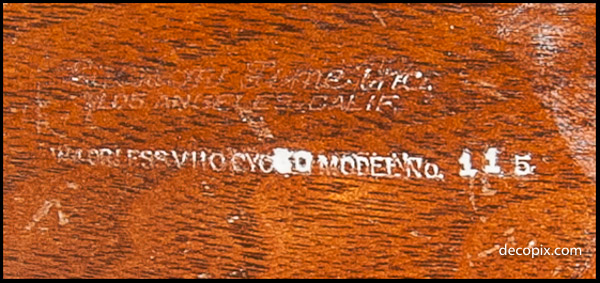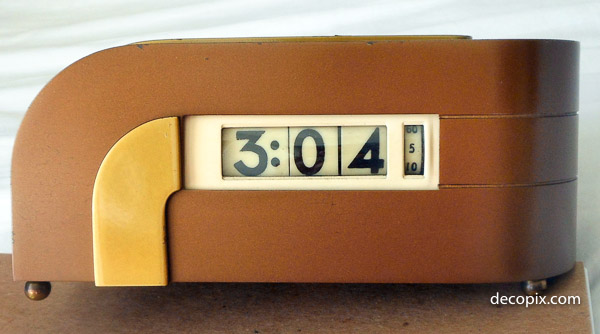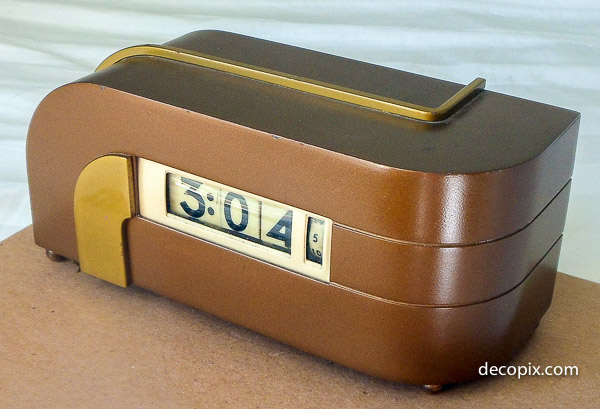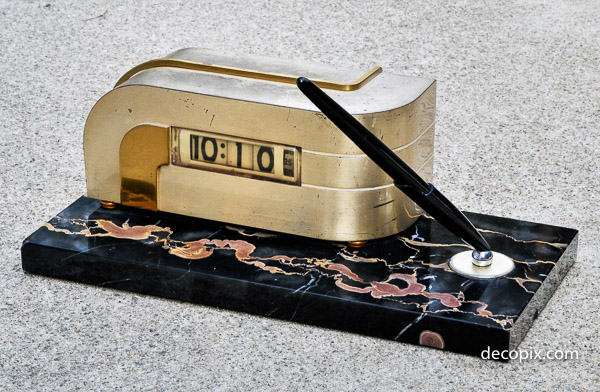The job of a Lawson clock chronicler is never done.
First, we have the solution to a mystery. Thirteen years ago, a clock turned up that might have been a Lawson, but it didn’t resemble any other Lawson, and it appeared to be unmarked (bear in mind that Lawson clocks made in the 1930s did not have the little Lawson decal on the front, so if the case wasn’t marked, there was no way to know for sure.)
Recently, clock expert Russ Windle turned up another one of these, and his find answers all our questions. Yes, it is a Lawson clock (model 69–a number shared with another completely different clock, but that’s not that unusual.)
Why it’s so hard to determine the make and model? Because Lawson Time used one of the stamps they used on metal cases and stamped the wood! This actually adds another mystery because I thought all very early Lawson clocks had metal tags, even those made by Lawson Clocks Limited. Nontheless, this is obviously a Lawson clock and the offset mounting screws on the bottom are another clue of how early this item is.
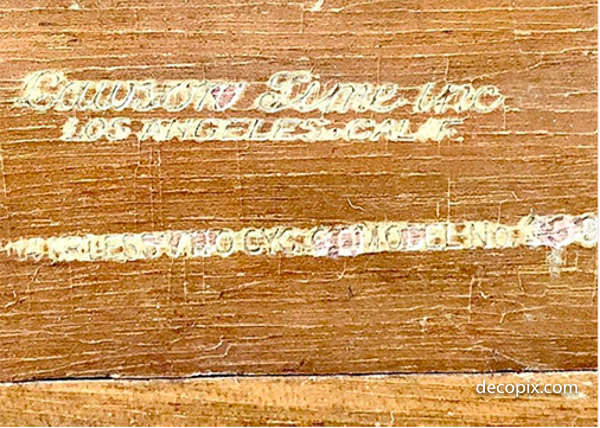
No sign of the patent number, so very early, before 1935.
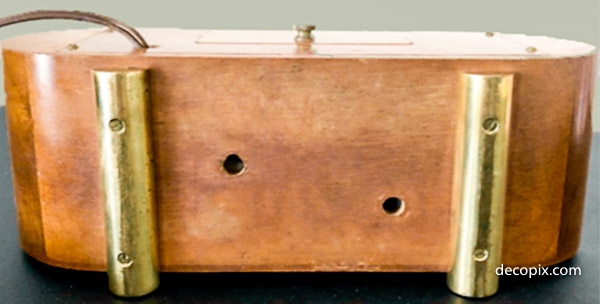
These diagonally offset mounting screws seen on just a few very early Lawson clocks (but this arrangement is common on Pennwood clocks.)
Believe it or not, other stamped wooden Lawsons exist. Collector Neil Kuns has two, and when I visited him he was kind enough to fetch some cornstarch and rub it on the case so you can gwt a better look at what this wood stamping looks like.
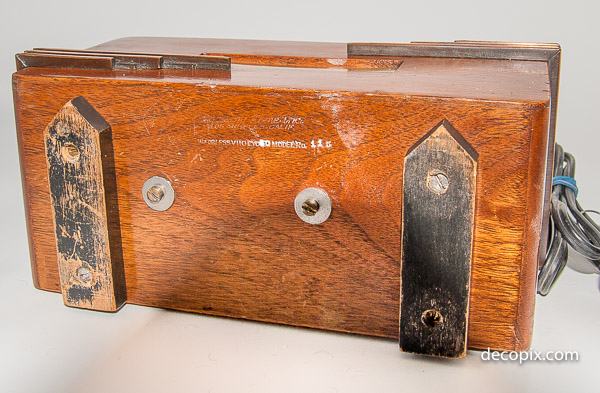
A Lawson model 115, lightly seasoned with cornstarch. Courtesy, Neil Kuns.
Another unusual clock that Neil found is this Zephyr. It has the desirable, graceful pre-war innverted J trim and the matching ball feet.
The mechanism is, comparatively speaking, brand new. We can tell by the font that it’s from Lawson’s last few years. So somebody replaced the mechanism in this clock but not necessarily for the reason you think. Not only is this Zephyr old; it’s a 50-cycle model–or it was, until the new mechanism was installed. I’ve never seen this finish before, so if you have, please let me know.
Lastly, we have a really nice Zephyr + Parker Pen set. This looks like the brushed “butler” silver finish with typical yellowing of the lacquer, resulting in a “champagne” color. Chris, the owner, tells me he has a 1930s Parker Pen catalog that shows a desk set with a Lawson clock, yet another interesting connection between Henry Fenenbock and the Parker Pen Company.
